
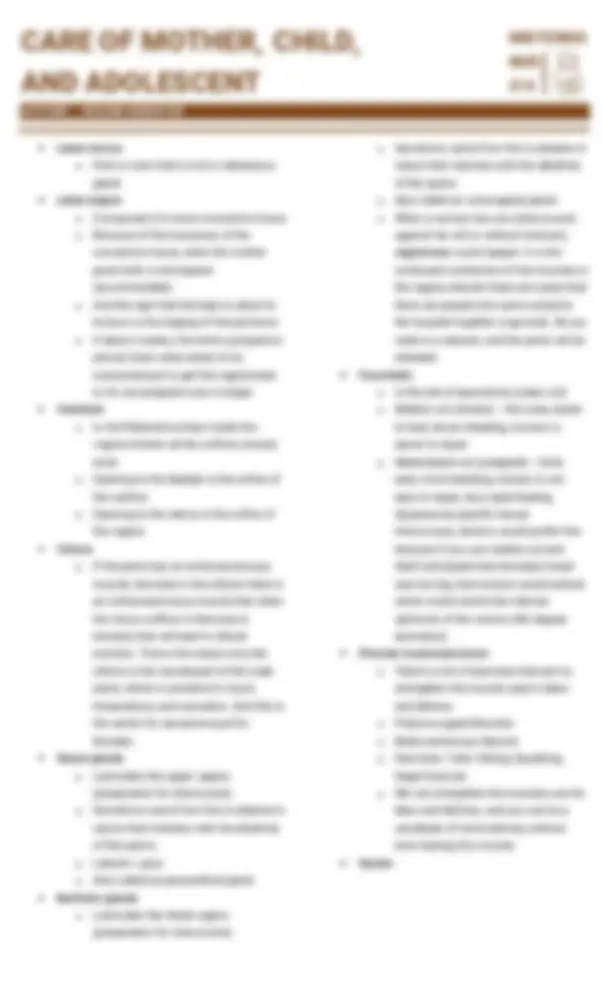
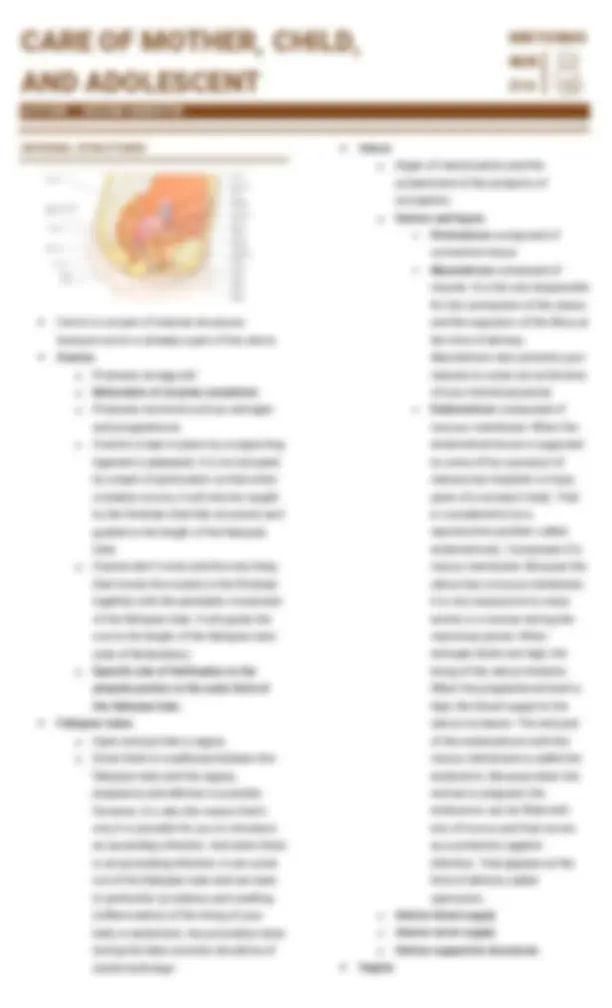
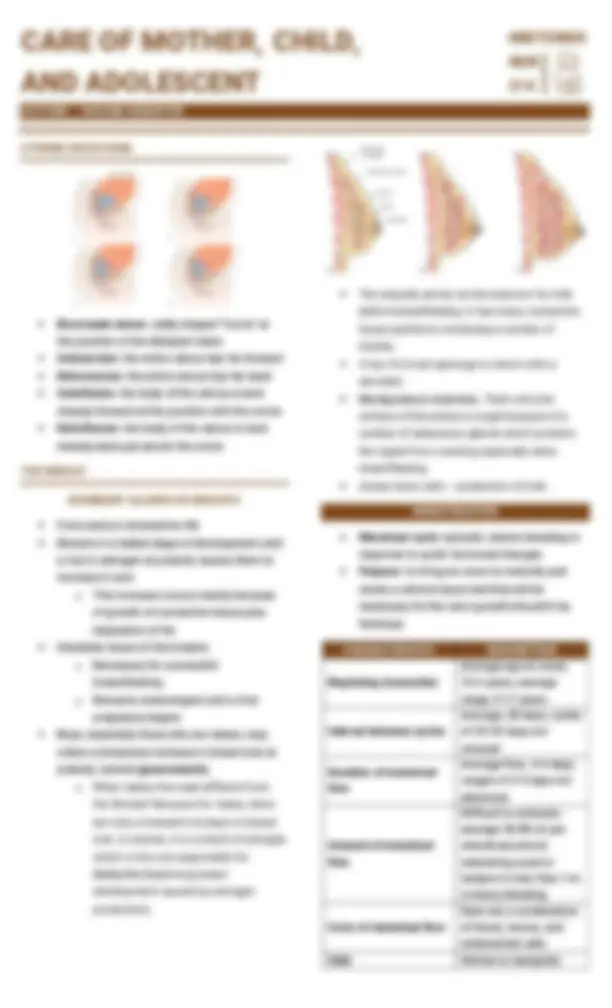
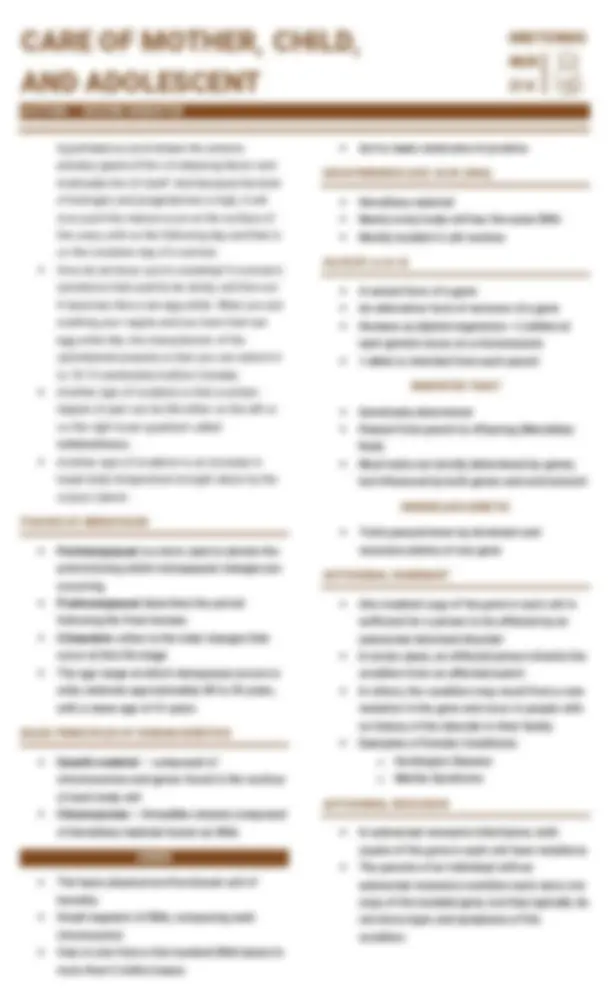
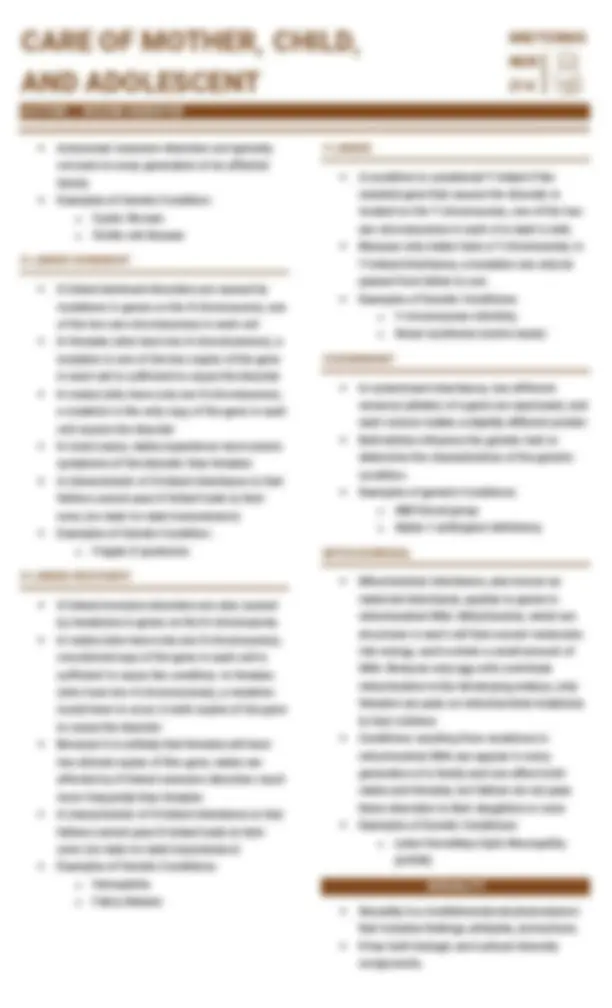
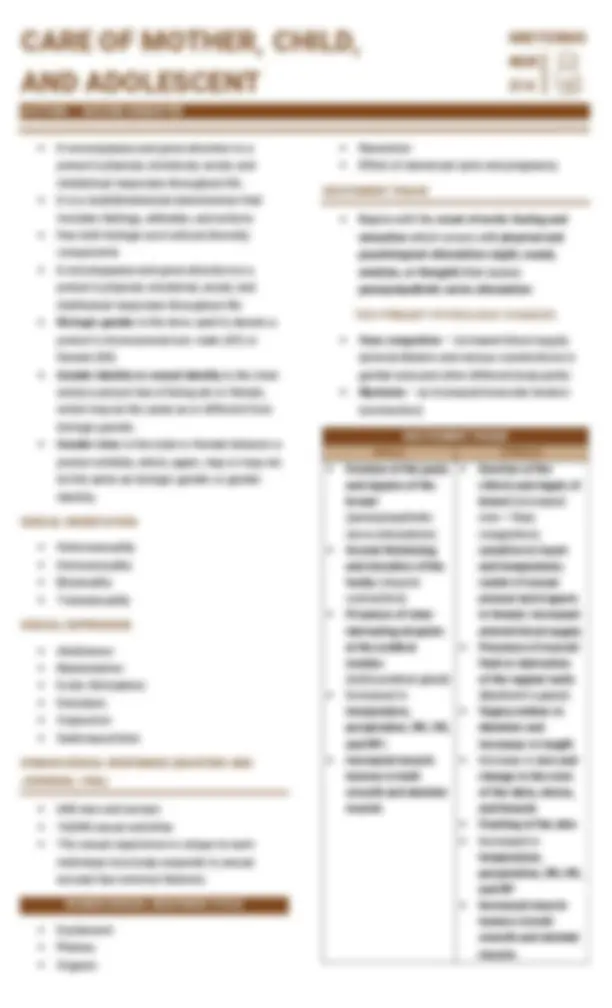
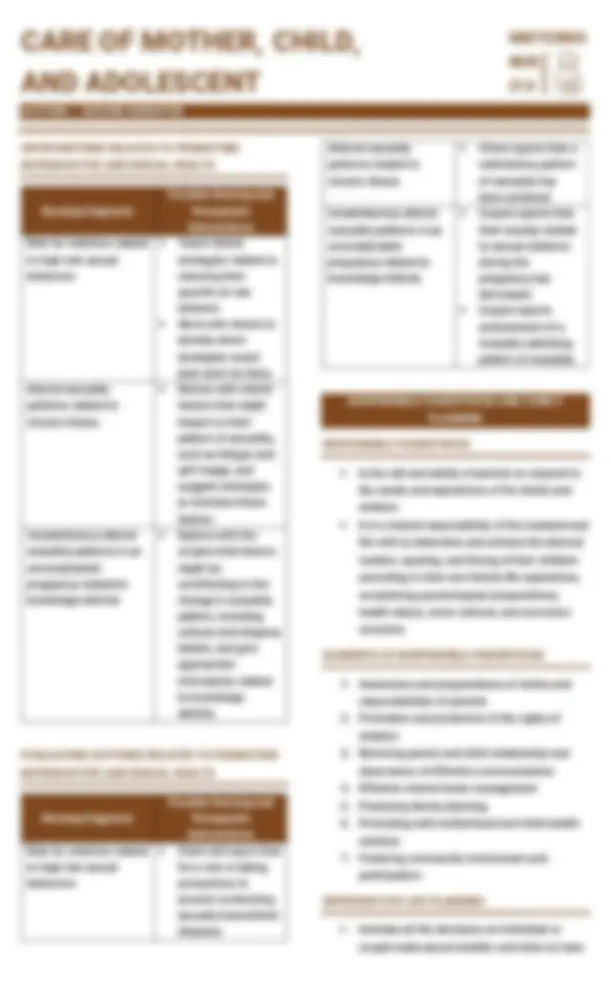
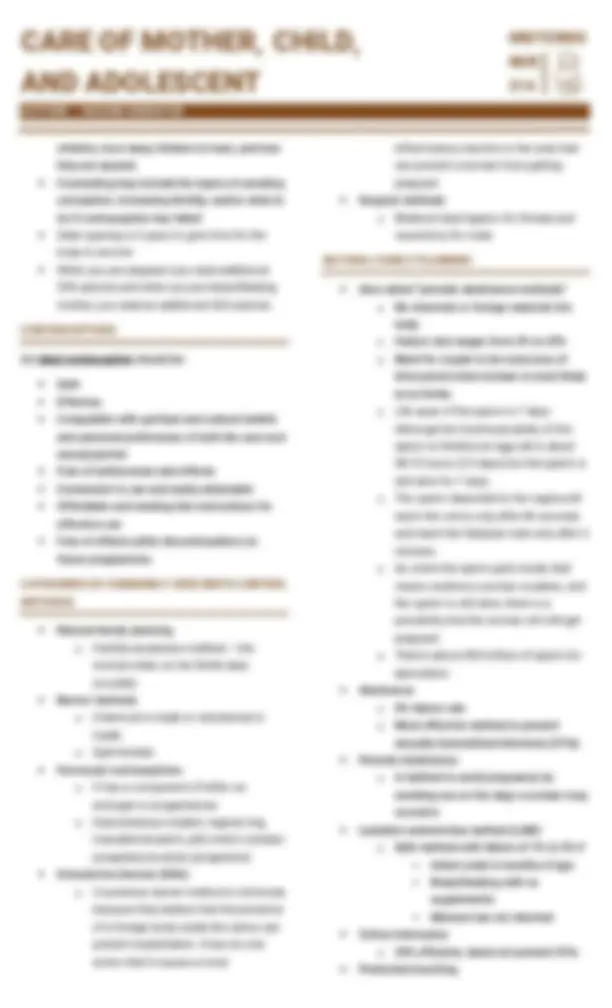
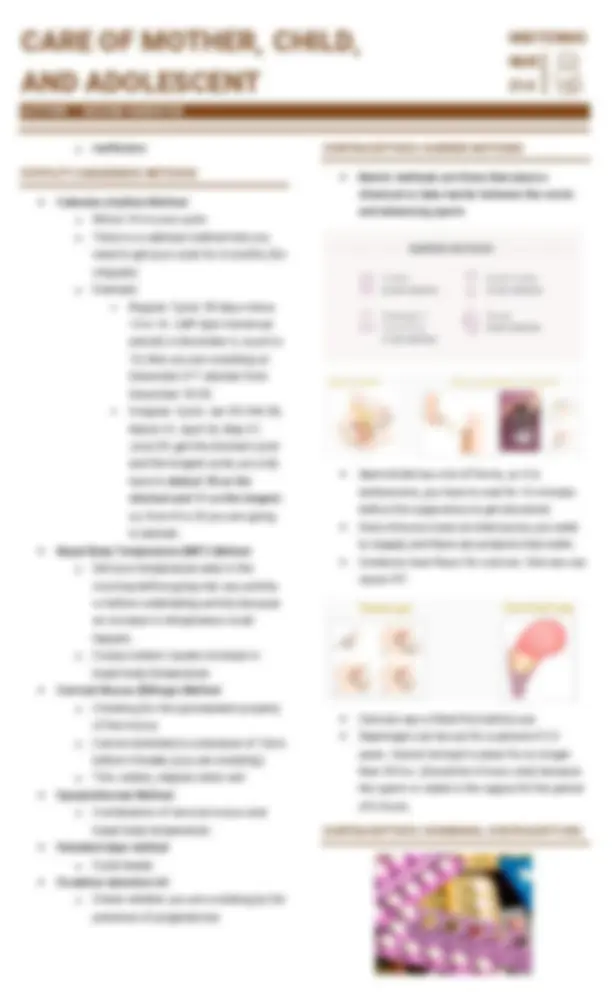
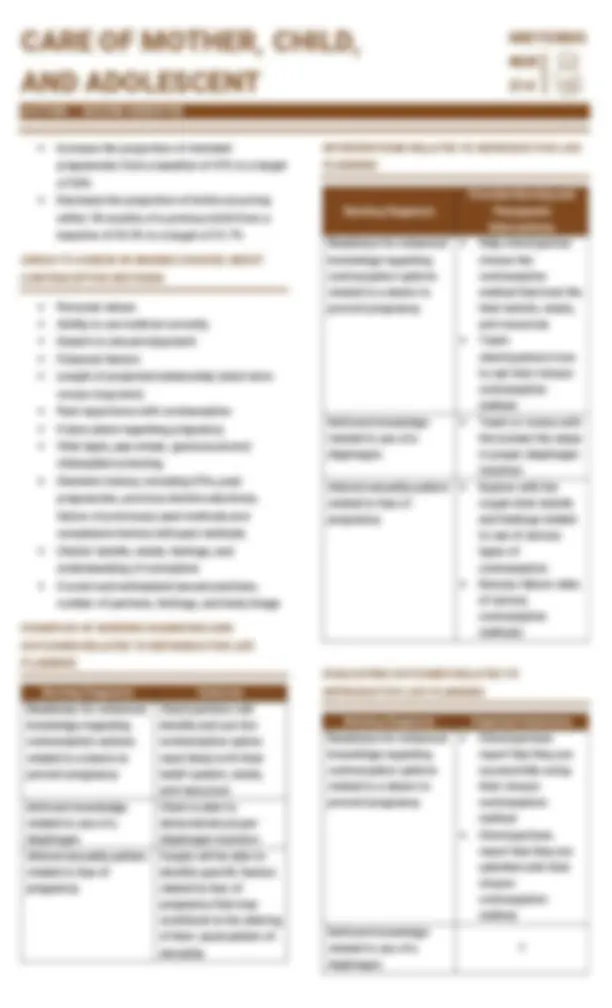
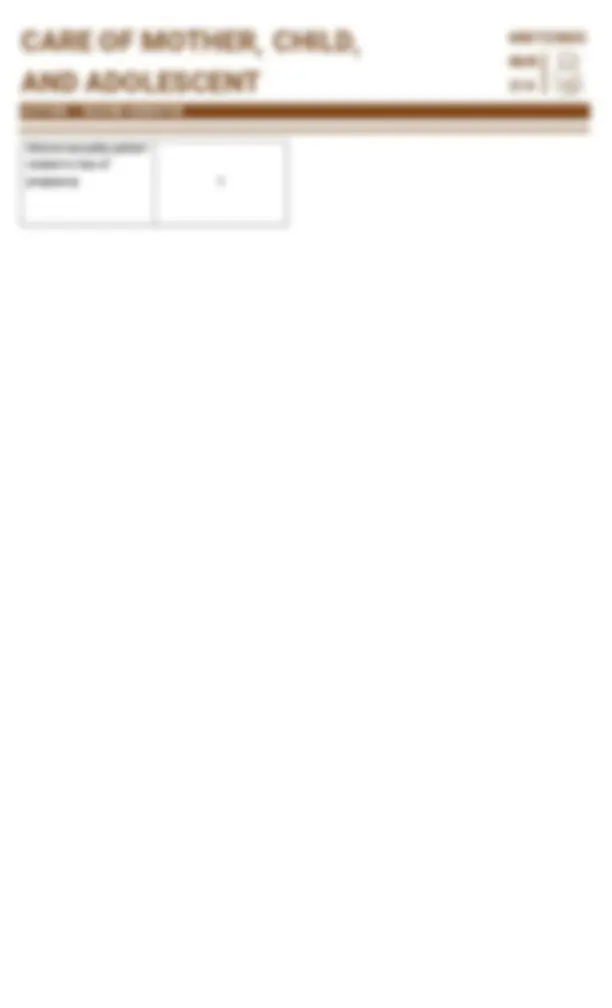


Study with the several resources on Docsity

Earn points by helping other students or get them with a premium plan


Prepare for your exams
Study with the several resources on Docsity

Earn points to download
Earn points by helping other students or get them with a premium plan
Community
Ask the community for help and clear up your study doubts
Discover the best universities in your country according to Docsity users
Free resources
Download our free guides on studying techniques, anxiety management strategies, and thesis advice from Docsity tutors
The nursing role in reproductive and sexual health, including the concept of unitive and procreative health, the male and female reproductive systems, menstruation, and uterine deviations. It also covers the theory of evolution and the story of creation in the book of Genesis. detailed information on the external and internal structures of the male and female reproductive systems, including the production of spermatozoa and the process of ovulation. It also discusses the menstrual cycle and the characteristics of menstruation.
Typology: Study notes
1 / 19

This page cannot be seen from the preview
Don't miss anything!












o Procreation = magpadami
1.1. Concept of Unitive and Procreative Health 1.2. Theory of EVOLUTION 1.3. The Male Reproductive System 1.4. The Female Reproductive System 1.5. Menstruation 1.6. Phases of the Menstrual Cycle 1.7. Tests 1.8. Genes 1.9. Sexuality 1.10. Human Sexual Response Cycle 1.11. Responsible Parenthood and Family Planning
hormones (e.g., testosterone), and are the principal cell type found in the interstitial supporting tissue, located between the seminiferous tubules. o Seminiferous tubules are the specific area for the production of sperm cells.
only become motile as they pass to the length of the vas deferens because the vas deferens is surrounded by veins and arteries called spermatic cord.
by a layer of peritoneum so that when ovulation occurs, it will only be caught by the fimbriae (hair-like structure) and guided to the length of the fallopian tube. o Ovaries don’t move and the only thing that moves the ovaries is the fimbriae together with the peristaltic movement of the fallopian tube. It will guide the ova to the length of the fallopian tube (site of fertilization) o Specific site of fertilization is the ampulla portion or the outer third of the fallopian tube.
has been reversed because the blood supply has increased, preparation for pregnancy should conception takes place. And when you ovulate, the viscosity of secretions that used to be very sticky, you are now considered to be wet, you will become slippery. The characteristic of secretion is copious, thin, watery, and that is the spinnbarkeit property of the cervical mucus. ISCHEMIC PHASE
hypothalamus and release the anterior pituitary gland of the LH releasing factor and eventually the LH itself. And because the level of estrogen and progesterone is high, it will now push the mature ovum at the surface of the ovary until on the following day and that is on the ovulation day of a woman.
Nursing Diagnosis Possible Nursing and Therapeutic Interventions Risk for infection related to high-risk sexual behaviors
children, how many children to have, and how they are spaced.
Altered sexuality pattern related to fear of pregnancy (^)?